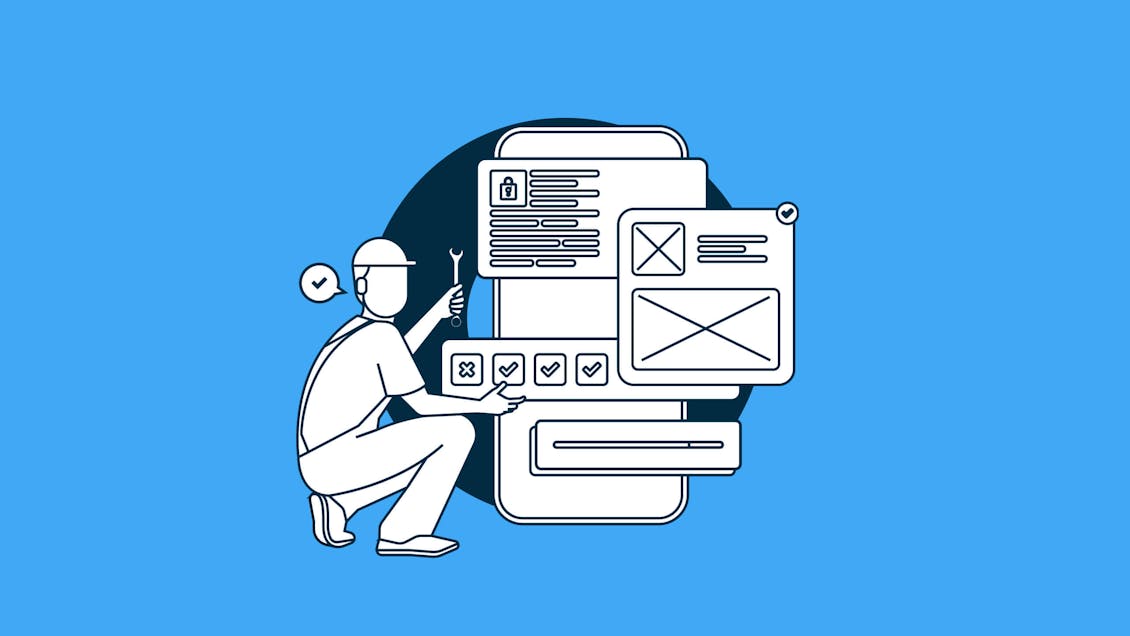Where you can improve your web UX right now

Give your users a better website experience and get the most out of your online presence
Let’s say your business has worked hard to launch a new website to engage prospects. And while you’re getting decent traffic, for some reason, visitors are not converting.
Perhaps it's time to look more closely at your website’s user experience (UX). After all, nearly nine out of 10 online shoppers won’t revisit a website if they have a bad experience, according to Amazon Web Services.
Today, only 55% of online businesses perform some sort of UX testing. This applies both to e-commerce sites that completely live off their digital platforms, as well as B2B businesses with a digital presence. This means that a significant number of organizations are lagging in terms of the overall potential of their web UX — which is critical to optimize now that Google’s algorithm favors sites that meet the E-E-A-T (Experience, Expertise, Authoritativeness, Trustworthiness) principles.
So, what can you do? The good news is there are a lot of small, relatively low-effort steps that companies can take to start trending in the right direction. Here’s a closer look.
Make a good first impression, quickly
Research shows that users form an opinion about a website in 0.05 seconds. As a result, you need to make sure that your UX is designed to capture attention long enough for the visitor to stick around and learn more about your business.
Your site should load quickly — 47% of users won’t wait for more than 2 seconds — and have a simple, aesthetically pleasing design. The top of your homepage or landing page should focus on essential details. The average visitor only spends 6 seconds reading written content on a site. In those 6 seconds, it should be clear what you offer, what makes your offerings superior, and — this is key — what the user should do next. Of course, you may need supporting information or a place to take those customers after they are interested. This is where links and anchors come in.
Give your web pages a consistent look
One of the simplest ways that your website can lose customers through UX is simple visual inconsistency. A basic website audit should check elements such as headings, fonts, colors, styles, and spacing to ensure that everything is consistent and themed. Failing to do this can confuse users, lower their recognition and recall of your brand, and diminish their trust in your site as a quality product.
One area where a lot of website owners fall short is losing track of inconsistency in favor of what seems like minor wins at first. For example, say an A/B test shows that you get a slightly better conversion with a color for a button versus your brand color. That minor conversion increase may be a small win, but if it hurts your brand consistency, that’s a loss overall. A/B testing is a useful tool for UX, but you can’t treat the results as if they were in a vacuum.
One way to provide a consistent user experience across your site is to create a digital design system — that way your team can easily manage changes that are aligned with your brand.
Prioritize accessibility
This is another area where a design system can make all the difference. By baking accessibility standards into your digital design components, copy, and code, you won’t just satisfy a small group of users — accessible design is better for everyone. For example, ensuring color contrast for color blindness can make designs easier to see and understand. Video captions benefit many users, not just hearing-impaired people, and alt-image text for screen readers can help improve SEO rankings.
Start with an accessibility and usability audit to determine where improvements can be made. Organizations such as government agencies and educational institutions may be subject to web accessibility requirements by law, to make experiences inclusive and accessible for everyone.
Make it mobile-friendly
Many websites are designed for desktop users, and yet more than 58% of web traffic comes through mobile phones. Your site should offer a consistent experience on any size screen using responsive design. You’ll want to pay attention to how navigation menus, call-to-action buttons, forms, and other key elements appear and function on small screens.
This is also why it’s important to follow the first piece of advice in this article — by making your content easily scannable and digestible, mobile visitors will be able to easily understand what you offer.
Use original images whenever possible
Your average online consumer is using dozens of different sites on any given day. This means that they are subtle experts in detecting stock photography versus original photography. It turns out that many users ignore these images, and they can potentially make your business appear non-trustworthy. This is especially the case if you are trying to get people to buy a product on your site.
When choosing original images for your site, focus on your goal. If you are in e-commerce, products should be front and center. If your site is more educational, pictures of your employees may make more sense. Of course, original photography isn’t always within budget, and stock photos are sometimes necessary. Alternative ideas include hiring a freelance photographer or illustrator using a service such as Fiverr, outsourcing branded content creation through a service such as Shutterstock Custom, or utilizing user-friendly design tools like Canva to create infographics. Just make sure the images are high quality and SEO-optimized with appropriate alt-image tags.
These fundamental steps are something that every company can use to improve its UX right at this moment. However, there’s a major difference between smaller steps like these and more holistic overhauls, which may be what your site really needs. In this case, you need deep research and analytics to figure out the best human-centered digital experience for your audience. We can help your site get the help it needs — talk to an expert at Modus today.


